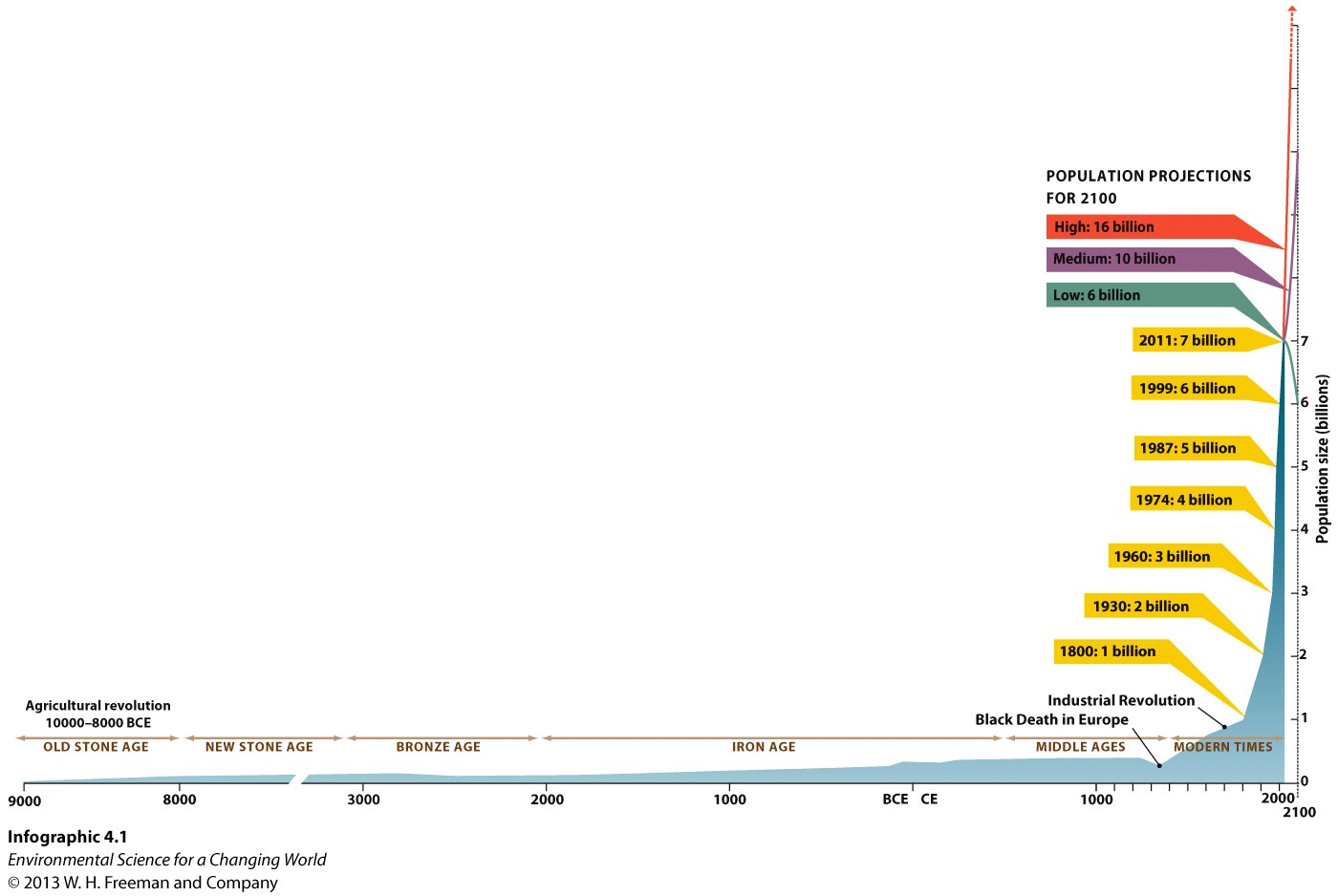
Chapter 4. Chapter 4: Human Populations
How has human population grown over time...

Guiding Question 4.1
How and why has human population size and growth rate changed over time? What is the size and distribution of today's population?
Why You Should Care
There is an entire class of party games which all share a theme of degrees of separation: how many acquaintances are there between you and a celebrity or how many links does it take to get from one unrelated topic to another on the Internet. Similar to those games is the fact that all major economic, political, and ecological problems in the world today can be related back to the rapid growth of the human population. There simply aren’t enough resources—natural, economic, or land—to be shared equitably by all of us. Although population growth seems to be slowing globally, time will tell if it is slowing enough to avoid catastrophe.

Question Sequence
1.
Use the information from Infographic 4.1 to calculate the following time spans.
| Rounding to the nearest thousand, about how many years after the Agricultural Revolution (roughly 9000 BCE) did it take for the human population to reach 1 Billion people? | years |
| How long did it take for the human population to grow from 1 to 2 billion people? | years |
| From 2 to 3 billion people? | years |
| From 3 to 4 billion people? | years |
| From 4 to 5 billion people? | years |
| From 5 to 6 billion people? | years |
| From 6 to 7 billion people? | years |
2.
Although always growing more or less exponentially, the global human population began its current phase of rapid exponential growth beginning with this historic period:
| A. |
| B. |
| C. |
| D. |
3.
Currently, it takes around this many years for the world population to grow by 1 billion people.
| A. |
| B. |
| C. |
| D. |
4.
The world population reached 1 billion people around this many years ago.
| A. |
| B. |
| C. |
| D. |
5.
Population Growth Rate refers to how many people ________.
| A. |
| B. |
| C. |
| D. |
6.
What has happened to the time required for the human population to add 1 billion people?
7.
How long do you predict it will take the population to reach 8 billion people? What variables might complicate your prediction?
8.
Did the Black Death during the 1300s slow human population growth? Why or why not?
9.
Compare and contrast the effects of the Agricultural and Industrial Revolutions on human population growth.

10.
How big are the populations of these countries in terms of the world's population or the population of the world's most populous countries?
A) The population of the United States is roughly of the population of India.
B) The population of the United States is roughly of the world population.
C) The population of Japan is roughly of the population of China.
D) Together, China and India make up roughly of the world's population.
Rank the following countries from lowest (5) to highest (1) population size: China, India, Japan, Pakistan, United States.
5:
4:
3:
2:
1:
Using the information from the map, indicate which of the following continents has the smallest population?
Activity results are being submitted...